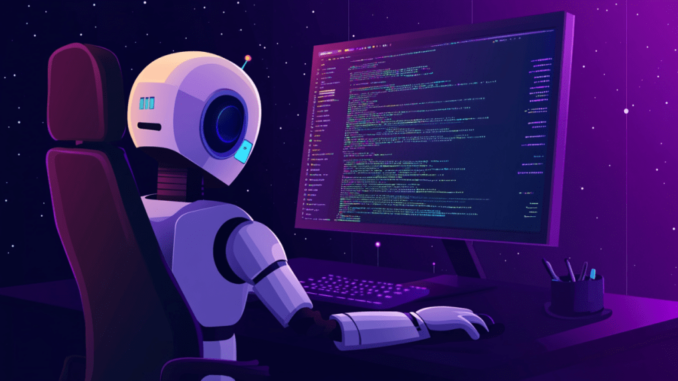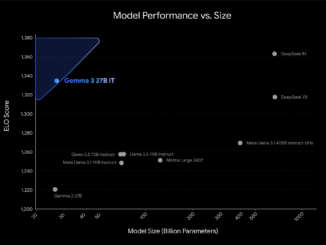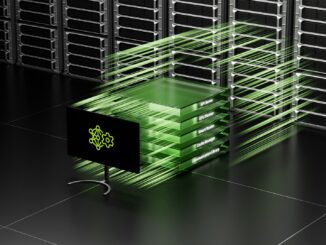
Subscribe to our daily and weekly newsletters for the most recent updates and exclusive content on premier AI coverage in the industry. Learn More
When Anthropic’s CEO Dario Amodei asserted that AI would generate 90% of code within half a year, the programming community prepared for widespread obsolescence. However, within Salesforce, a contrasting reality has already emerged.
“Approximately 20% of all APEX code written in the previous 30 days was produced by Agentforce,” Jayesh Govindarajan, Senior Vice President of Salesforce AI, shared during a recent conversation. His team monitors not only the code created but also the code that is actually deployed into production. The statistics unveil a surge that is hard to overlook: 35,000 active monthly users, 10 million lines of accepted code, and internal tools saving 30,000 developer hours each month.
Nevertheless, Salesforce’s developers are not becoming obsolete. They are transforming.
“The great majority of development — at least the initial draft of code — will be composed by AI,” Govindarajan conceded. “However, what developers do with that initial draft has fundamentally evolved.”
From lines of code to strategic oversight: How developers are evolving into technology pilots
Software engineering has always combined creativity with monotony. Now AI takes over the latter, steering developers toward the former.
“You transition from a strictly technical position to a more strategic one,” Govindarajan elucidated. “Not merely ‘I have something to build, so I’ll construct it,’ but ‘What should we create? What does the customer genuinely desire?’”
This change reflects other technological upheavals. When calculators supplanted manual calculations, mathematicians didn’t disappear — they began addressing more intricate challenges. When digital cameras rendered darkrooms obsolete, photography flourished instead of dwindling.
Salesforce posits that coding operates similarly. As AI diminishes the cost of software development, developers acquire what they have perpetually lacked: time.
“If producing a functional prototype once required weeks, now it takes mere hours,” Govindarajan stated. “Instead of presenting customers with a document outlining what you might construct, you simply provide them with functioning software. Then you iterate based on their feedback.”
‘Vibe coding’ is here: Why software engineers are now orchestrating AI instead of typing each command
Coders have started embracing what’s known as “vibe coding” — a term introduced by OpenAI co-founder Andrej Karpathy. This method involves giving AI broad directives as opposed to exact instructions, followed by fine-tuning what it produces.
There’s a new kind of coding I call “vibe coding”, where you fully give in to the vibes, embrace exponentials, and forget that the code even exists. It’s possible because the LLMs (e.g. Cursor Composer w Sonnet) are getting too good. Also I just talk to Composer with SuperWhisper…
— Andrej Karpathy (@karpathy) February 2, 2025
“You essentially provide a high-level direction and allow the AI to utilize its creativity to create a first draft,” Govindarajan remarked. “It may not function exactly as you wish, but it gives you something to refine. You enhance aspects of it by indicating, ‘This is promising, do more of this,’ or ‘Those buttons are poorly designed, I don’t require them.’”
He likens the procedure to musical collaboration: “The AI establishes the rhythm while the developer fine-tunes the melody.”
While AI excels in generating straightforward business applications, Govindarajan admits it has constraints. “Are you going to construct the next-generation database using vibe coding? Unlikely. However, could you create an engaging UI that executes database calls and develops a fantastic business application? Absolutely.”
The new quality imperative: Why testing strategies must advance as AI generates more production code
AI doesn’t merely produce code differently — it necessitates alternative quality control strategies. Salesforce established its Agentforce Testing Center after discovering that machine-generated code required new validation methods.
“These are stochastic systems,” Govindarajan clarified. “Even with extremely high accuracy, situations can arise where they might fail. Perhaps it fails at step 3, or step 4, or step 17 out of 17 steps it’s executing. Without adequate testing tools, you won’t be aware.”
The non-deterministic nature of AI outputs means developers must become adept at boundary testing and establishing guardrails. They need to comprehend not just how to code, but also how to assess it.
Beyond code creation: How AI is condensing the entire software development lifecycle
The transformation reaches beyond initial coding to encompass the entire software lifecycle.
“During the build phase, tools comprehend existing code and extend it intelligently, which accelerates the process,” Govindarajan stated. “Then comes testing—generating regression tests, formulating test cases for new code—all of which AI can manage.”
This all-encompassing automation creates what Govindarajan refers to as “a significantly tighter loop” between conception and execution. The quicker developers can test and refine, the bolder they can become.
Algorithmic reasoning still matters: Why computer science foundational concepts remain crucial in the AI epoch
Govindarajan regularly addresses anxious inquiries regarding the future of software engineering.
“I am frequently asked if individuals should continue to pursue computer science studies,” he noted. “The response is an emphatic yes, because algorithmic reasoning remains crucial. Decomposing large problems into manageable parts, comprehending which software can address which issues, modeling user requirements—these skills are becoming increasingly valuable, not less.”
What changes is how these competencies are demonstrated. Instead of typing out each solution character by character, developers guide AI tools toward optimal results. The human provides discernment; the machine supplies speed.
“You still require good intuition to offer appropriate directives and critique the output,” Govindarajan stressed. “It takes genuine discernment to examine what AI generates and identify what functions and what does not.”
Strategic elevation: How developers are transitioning into business partners rather than merely technical implementers
As coding itself becomes commodified, developer roles are increasingly aligned with business strategy.
“Developers are adopting supervisory roles, directing agents working on their behalf,” Govindarajan articulated. “However, they remain accountable for what is deployed. The ultimate responsibility lies with them.”
This elevation positions developers closer to decision-makers and further from the minutiae of execution—a promotion rather than a dismissal.
Salesforce facilitates this transition with tools tailored for each phase: Agentforce for Developers manages code generation, Agent Builder allows for customization, and Agentforce Testing Center guarantees reliability. Collectively, they establish a platform for developers to grow into these enhanced roles.
The company’s vision sharply contrasts with the “developers are doomed” narrative. Rather than coding themselves into redundancy, software engineers who adapt might discover themselves more vital than ever.
In a realm where reinvention is commonplace, AI signifies the most potent compiler to date—transforming not just how code is authored, but who authors it and why. For developers prepared to elevate their own cognitive frameworks, the future appears less like eradication and more like transcendence.








Be the first to comment